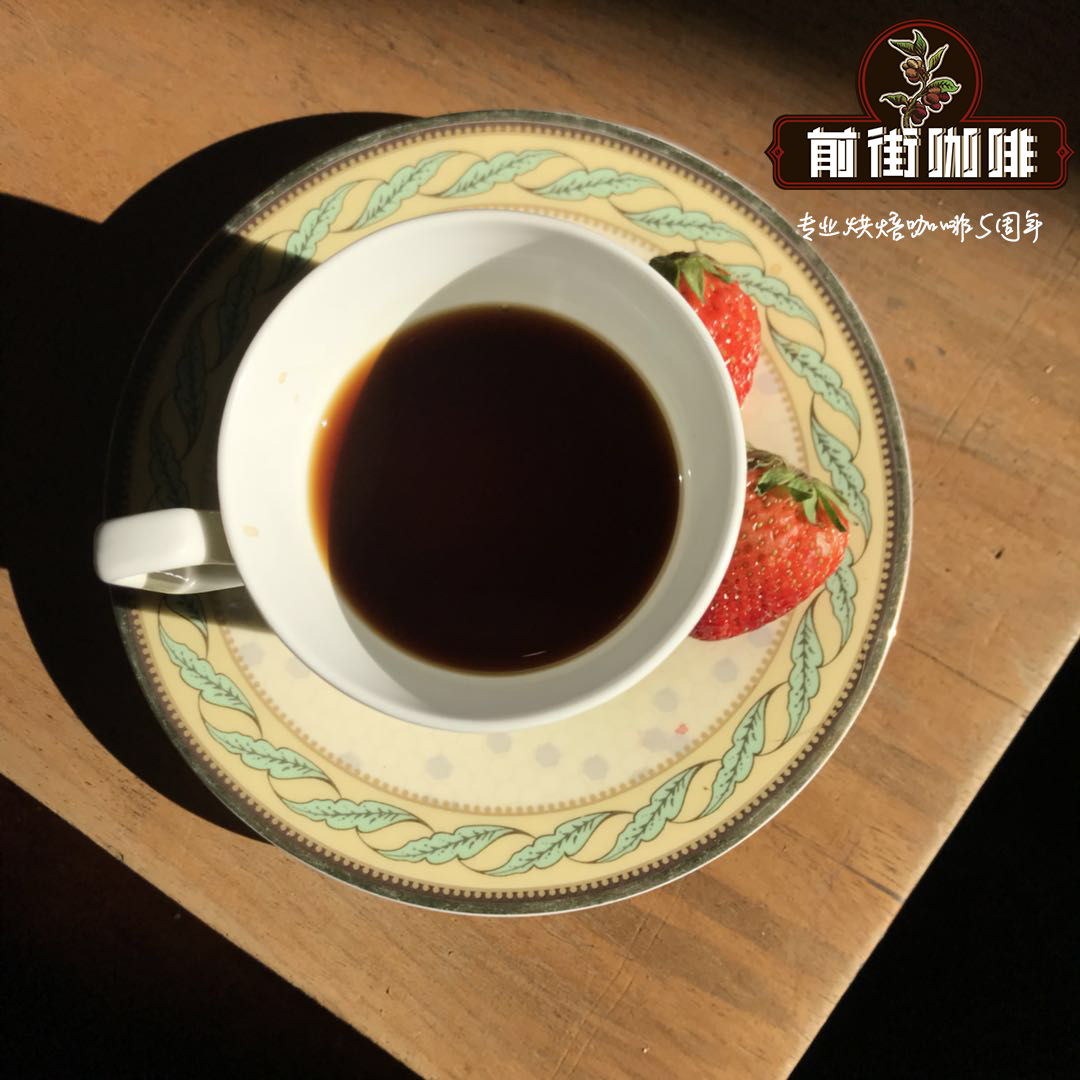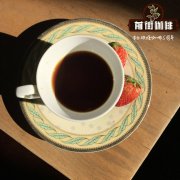The flavor of honey-treated beans in Alajuela, Althacia, Costa Rica. Brother

Professional coffee knowledge exchange more coffee bean information please follow the coffee workshop (Wechat official account cafe_style)
The flavor of honey-treated beans in Alajuela, Althacia, Costa Rica. What is the variety of Costa Rican coffee?
The most common way of handling coffee beans in Central American countries is washing, but sun-dried beans and Miel Process, the most popular in recent years, are emerging in more and more countries, a trend that began in Costa Rica. Today, Costa Rica has developed the "micro mill" coffee micro revolution. The main spirit of micro mill is to hope that every small farm in Costa Rica can have its own bean processing system, so that the coffee can be collected, processed and bagged by the farm, and its own coffee beans can be processed in the most suitable way, so that the best quality can be achieved and the farm can get better profits. But it also means that small farms must be responsible for the coffee they produce and handle.
The dried honey mucosa on the surface of coffee beans is yellowish brown, which is called honey treatment.
The Finca Las Lajas adobe farm is located in the foothills of the volcanoes in the central valley of Costa Rica, about 1300 micro mill 1500 meters above sea level. Coffee grows in the shade of huge trees. This is a typical small farm with a rare output of coffee. After 2000, the farm began to transform to grow organic coffee. The owners of the farm thought it was good for the environment and their family health. It takes 3-5 years to convert to an organic farm to eliminate the metabolism of pesticides and chemical fertilizers in the soil, which turns out to be a good way to make Finca Las Lajas a healthy and beautiful farm.
Costa Rican boutique coffee bags will be marked as high-altitude hard organic beans S.H.B ORGANICO
The French couple Francisca and Oscar Chac ó n are the third generation operators of Las Lajas, located in Sabanilla de Alajuela, the foothills of the Poas Volcano in the central valley of Costa Rica, and the Chac ó n family has been growing coffee for more than 80 years since their grandparents. When Oscar's father died of cancer in 1995, they suspected that the chemical fertilizers and pesticides used on the farm were the culprits, stopped using toxic chemicals and required all processes to be planted and fertilized in accordance with organic standards. use organic compost, while extending organic standards to soil, shade trees and washing plant procedures, using ecologically friendly natural farming methods and shade planting in native forests. After five years of organic planting, until the soil, leaves, and fruit analysis are qualified, in 2000, Lajas became the first organic certified manor in Costa Rica, and the Lajas manor has been certified by JAS in Japan, USDA and NOP in the United States.
After passing the expensive organic certification, the couple went a step further and began to set up their own processing plant. In the past, they could only send the cherries from the farm to large commercial processing plants, but the post-processing process was out of control, and there was a washing plant to deal with their own coffee, resulting in a sharp increase in overall quality.
Lajas Manor is the first manor in Central America to do honey treatment and sun treatment. Tanning is a very traditional practice, which uses the least resources, but because there are too many uncontrollable factors, it is very difficult to do well. Lajas has added many innovations, such as the sugar meter (Brix meter), which is often equipped by the wine industry in France, to measure the sugar content of the fruit, and the best harvest machine and treatment method is determined by the sugar content of Brix. Only those with more than 20% sweetness will be exposed to the sun. General fruit Brix value: Apple 14%, lemon 12%, passion fruit 18%, but Lajas coffee cherry can reach 21-22%!
LaHaas not only does the sun, honey treatment, but also has water to wash beans. The beans grown on the farm are Carurra, Catuai and Villa Sarchi, as well as a small number of Kenyan species SL28, Obata and so on. Although the elevation of the manor is not very high, about 1300-1500 meters, but the use of original treatment, so that the flavor of Lajas unique.
The bean seed used in this sun-dried bean is SL 28, which can be said to make the flavor of SL Kenyan beans incredible!
Innovative Solar method: raisin Solar
In 2008, a severe earthquake struck Costa Rica, and Lajas had no water or electricity for a whole week and could not be washed. Lajas hired harvesting workers do not want to stop work, stop work will not get paid, Lajas is also unwilling to stop work to cause losses, so decided to use the sun method to deal with fresh fruit. This batch of sun beans were taken to the local cup tester, and they all said that the flavor was completely wrong and could not be sold. Lajas didn't give up and gave it to the raw bean merchant Cafe Imports. Unexpectedly, they liked it very much! From then on, it opened the door of Costa Rica's first sun-dried beans, and Lajas became a famous manor for its sun and honey treatment.
Over the next few years, Lajas continued to experiment with different sun treatments, creating different flavors through different ways of shading with plastic cloth, and naming them in a unique way, getting rid of the bad impression of the sun in the past. these loud names bring global fame to Lajas Manor.
Black Pearl (Perla Negra): harvested coffee cherries are placed on African scaffolding in the early morning and regularly turned and exposed to 11.5% moisture content. The whole process takes about two weeks.
Black Soul (Alma Negra): the harvested coffee cherries are placed on the African scaffolding in the early morning, turn regularly for exposure, and rest with plastic cloth until the moisture content is 11.5%. The whole process takes about three weeks.
Raisin tanning (Raisin): combine black pearl and black soul to dry for more than three weeks. First of all, it was laid flat on the cement floor in the greenhouse, piled into a hill in the afternoon, covered with plastic cloth for shade, and then spread flat the next morning. About a week or two later, it was changed to the shade of the African scaffolding under the greenhouse. There are two sets of the upper and lower layers of this African shelf. Every day, the upper and lower cycle changes the position, which will make the coffee beans dry evenly until the end of processing, so that the fermentation cycle is higher. The sweetness and flavor complexity of coffee beans are greatly improved.
According to Kun Yi, a raw bean merchant in Shanghai, the raisin treatment was specially made by Lajas for South Korean players participating in the barista contest, and it was unexpectedly very popular in the Korean market. The estate experimented with raisins in the sun on two beans, VillaSachi and SL28, both of which were relatively rare on the farm, of which SL28 was first harvested four years later in 2016.
This raisin sun baked by SOE is SL28, which pushes the flavor of the SL series to the extreme under this original treatment.
While the small farm belts of micro mill are relatively simple and clean.
Property Characteristics: farm characteristics
Farm Farm name: Finca Las Lajas
Farmer Farm owner: Chac ó n Solano Family
City cities: Foothills of the Poas Volcano, Los Angeles, Sabanilla de Alajuela
Region producing area: Central Valley Central Valley
Country countries: COSTA RICA Costa Rica
Altitude altitude: 1300 Murray 1500m
Certification Certification: Organic certified
Coffee Characteristics: coffee characteristics
Variety varieties: Caturra and Catuai Kaddura and Kaduai
Kaduai is a hybrid of Kaddura and Mundo Novo Mondovor. The common feature of the two varieties is strong acidity and complex taste. The difference is that Kaduai can harvest abundant and less diseases and insect pests year after year, and the biggest disadvantage is low planting cost but only 10 years of life.
Processing System treatment: honey treatment: peel and pulp are removed and dried on the high bamboo shed of the bean drying farm, and then the shelled coffee is removed by machine.
Appearance appearance: 17muri 18 eyes
Grade level: S.H.B
Top Jury Descriptions judge's comment: the baking degree measured by the cup for 60 seconds at the beginning of the first explosion (Cinnamon)
Aroma aroma / flavor flavor: drupe, cocoa, aromatic forage, honey, almond milk tea, grass cool grass, vanilla, melon, chocolate
Sour: Cherry, kumquat, grape, citrus, mint, sour and silky
Mild acidity
The complexity of complex is similar to that of other: aroma of whole wheat biscuits, smooth milk cream, cooked tea flavor, complex flavor and taste, sweet finish of rock sugar.
Overall style attributes: medium strength, sweet and sour balance, wine aroma
Finca Las Lajas, Costa Rica is a sparse farm where coffee beans were harvested in October 2011. the milk is smooth and creamy, with a classic honey bean feel and a peculiar whisky flavor on the finish.
Qianjie recommended cooking method: hand flushing
V60 filter cup, 15g powder, water temperature 89 degrees, small Fuji grinding degree 4, water powder ratio close to 1:15.
30 grams of water steaming, steaming time for 30 seconds, subsection: injection to 130 grams of water cut off, such as the water level dropped by 1 stroke 3, again water injection to 225 grams.
Important Notice :
前街咖啡 FrontStreet Coffee has moved to new addredd:
FrontStreet Coffee Address: 315,Donghua East Road,GuangZhou
Tel:020 38364473
- Prev

What are the flavor and taste characteristics of sun-dried beans [Black Soul] in La Jas Manor, Costa Rica? How to hand
Professional coffee knowledge exchange more coffee bean information please follow the coffee workshop (Wechat official account cafe_style) Costa Rica Lajas manor sun beans [black soul] flavor and taste characteristics? How to make Costa Rican coffee by hand? Lajas Manor is located in the central valley area at the foot of the Pos de Alajuela volcano, which is run by the Chacn family.
- Next

What is the flavor of Kaddura with the whole berry treatment of alpine extremely hard beans in the new Nordega region of Nicaragua?
Professional coffee knowledge exchange more coffee bean information please follow the coffee workshop (Wechat official account cafe_style) New Nordega Nicaragua alpine hard beans whole berry treatment Kaddura what is the flavor? How to get a refreshing and balanced taste with your hands? Coffee cultivation in Nicaragua began in the mid-18th century, and coffee was mostly grown in the central and northern plateaus. sixteen
Related
- Detailed explanation of Jadeite planting Land in Panamanian Jadeite Manor introduction to the grading system of Jadeite competitive bidding, Red bid, Green bid and Rose Summer
- Story of Coffee planting in Brenka region of Costa Rica Stonehenge Manor anaerobic heavy honey treatment of flavor mouth
- What's on the barrel of Blue Mountain Coffee beans?
- Can American coffee also pull flowers? How to use hot American style to pull out a good-looking pattern?
- Can you make a cold extract with coffee beans? What is the right proportion for cold-extracted coffee formula?
- Indonesian PWN Gold Mandrine Coffee Origin Features Flavor How to Chong? Mandolin coffee is American.
- A brief introduction to the flavor characteristics of Brazilian yellow bourbon coffee beans
- What is the effect of different water quality on the flavor of cold-extracted coffee? What kind of water is best for brewing coffee?
- Why do you think of Rose Summer whenever you mention Panamanian coffee?
- Introduction to the characteristics of authentic blue mountain coffee bean producing areas? What is the CIB Coffee Authority in Jamaica?

